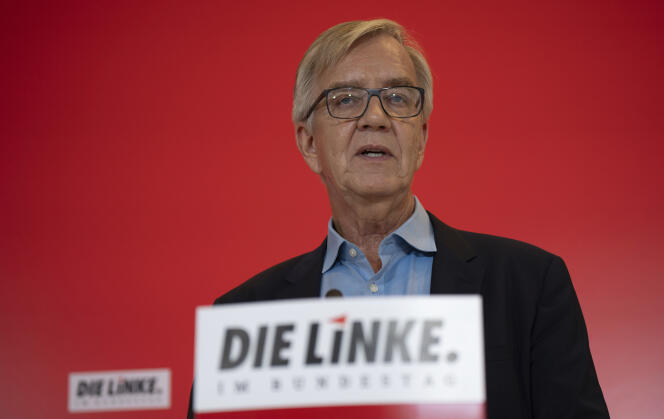
A new logo, new faces and the promise of a "new beginning." Gathered at a congress in Augsburg (Germany) from November 16 to 18, the left-wing party Die Linke was at pains to disprove those who consider it to be clinically dead following the shock departure of its most high-profile figure, Sahra Wagenknecht. In open conflict with the party leadership, the former vice-president decided to slam the door and create a new movement on October 23, taking nine of the party's 38 MPs with her. As a result of this split, Die Linke no longer has enough MPs to maintain its group in the Bundestag. This is the first time since 1960 that a parliamentary group has disappeared during the course of a legislature.
The split between Wagenknecht and Die Linke is symptomatic of the deep crisis of the German left. It is facing a sharp erosion of its electoral base, competition from a far-right that is more conquering than ever and the need to provide answers to issues that are now central to public debate, first and foremost immigration.
To take the measure of this crisis, one must look back to Die Linke's origins. The party was born out of the merger between the Party of Democratic Socialism (PDS), heir to the party in power in the German Democratic Republic (GDR, formerly East Germany) from 1949 to 1990, and the Electoral Alternative for Work and Social Justice, a motley alliance of left-wing social democrats, neo-Marxists and alterglobalists from West Germany. Die Linke was first formed as a group in the Bundestag after the 2005 parliamentary elections, before becoming a party in 2007. Two years later, it won 11.9% of the parliamentary vote, a figure it has never exceeded. Just under 10% in 2013 and 2017, it collapsed to 4.9% in 2021.
Die Linke's promise reflected its ability to occupy a space on the left no longer occupied by the Social Democratic Party (SPD). The years 2002-2005, Gerhard Schröder's second term as Chancellor, were a turning point in this respect. Marked by far-reaching structural reforms, notably the Hartz laws on the labor market, they enabled the German economy to make a lasting recovery but were initially hard to stomach in social terms. More "social-liberal" than "social-democratic," Schröder's "Agenda 2010" shifted the SPD to the center, where it has remained ever since.
'Good conscience'
Electorally, however, the vacant space on the left never developed into a real opportunity for Die Linke. Although the SPD declined, it did not plummet like the Panhellenic Socialist Movement (Pasok) in Greece or the Socialist Party in France, which partly explains why Die Linke did not enjoy the rise of Syriza or La France Insoumise, despite its promising beginnings.
You have 51.45% of this article left to read. The rest is for subscribers only.